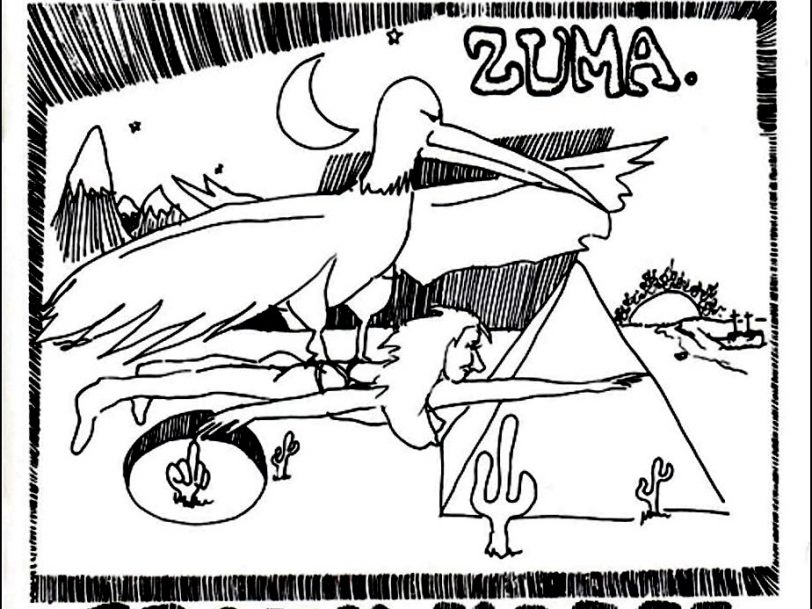Neil Young’s Zuma album came out on 10 November 1975, just five months after the final instalment of his dark “Ditch Trilogy” (Time Fades Away, Tonight’s The Night and On The Beach), and it reunited the singer-songwriter with a revitalised Crazy Horse that now featured rhythm guitarist Frank “Poncho” Sampedro. The album, named after Zuma Beach, in Los Angeles, where the album’s co-producer David Briggs had a house, featured nine Young compositions, on which he sang and played guitar and piano.
Listen to ‘Zuma’ here.
Young, who initially considered calling the album My Old Neighbourhood or Ride My Llama, said that during the period working near Zuma Beach he was writing a lot of weird songs “about Peru, the Aztecs and the Incas. Time travel stuff.”
“It was like the rebirth of a band”
Zuma came out on Reprise Records three years after the death of Crazy Horse’s original rhythm guitarist, Danny Whitten, who died of an overdose following his dismissal from the band. As well as Young and new man Sampedro, the core Crazy Horse line-up retained Billy Talbot on bass and Ralph Molina on drums, both of whom had played on the 1969 Young-Crazy Horse album Everybody Knows This Is Nowhere. “It was a different Crazy Horse. It was like the rebirth of a band. We all just learned a lot about each other and just hung out and had a lot of fun really,” remembered Sampedro.




